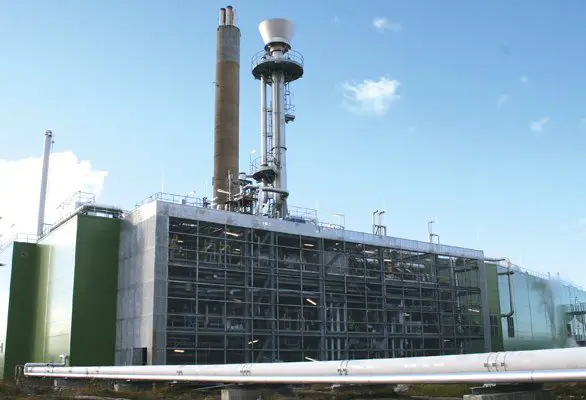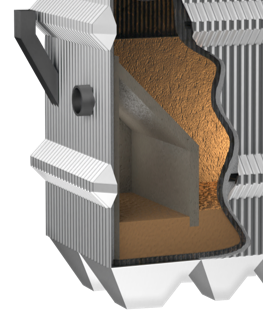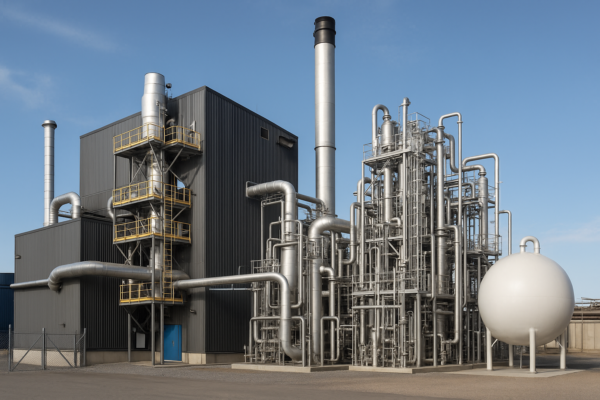Technology of BioShare
General gasification in dual bed reactor system
Dual-chamber gasification of biomass is an advanced thermochemical process that converts solid biomass into a combustible gas (syngas) by separating the combustion and gasification reactions into two distinct chambers or stages. In essence, one chamber fully combusts a portion of the fuel to generate heat, and the other chamber uses that heat to vaporise the remaining biomass with little or no direct oxygen contact. This arrangement (often called indirect or two-stage gasification) produces a cleaner, higher-energy syngas than traditional single-reactor gasifiers. The approach was pioneered in laboratories in Europe and has been demonstrated at industrial pilot scale (e.g. the 20MW GoBiGas plant in Gothenburg). Today, dual-chamber systems are drawing interest from industry as a way to efficiently produce renewable gas or combined heat-and-power (CHP) from biomass, with improved emissions and fuel flexibility.

GoBiGas plant in Gotheburg.

Integrated Dual Bed technology
The innovations
At BioShare, we have developed an innovative patented dual bed reactor system that enables seamless integration of thermochemical conversion processes, such as gasification and pyrolysis, into existing bubbling fluidized bed combustion plants. The core of our concept is the physical separation of the fluidized bed into two interconnected chambers: one dedicated to biomass conversion and the other to combustion.
This separation can be achieved either by inserting a dividing wall directly within the existing bed, creating two distinct zones inside the same vessel, or by building a separate conversion chamber adjacent to the main combustion bed. In the external configuration, a gas separator wall acts as a gas lock, allowing hot bed material to move freely between the chambers while keeping the gases from mixing. In both configurations, the movement of bed material efficiently transfers thermal energy from the combustion zone to the conversion process without contamination between the gas streams. This can also be combined with a patented method for separating biochar from the bed allowing for high quality char to be produced. BioShare has also the technology and know-how to design and build standalone dual bed solutions for green field projects.
By maintaining clean gas environments and efficient heat transfer, this technology opens new opportunities for existing boiler plants. It allows the production of high-purity syngas that can be converted into various products. Importantly, it requires minimal modification to the existing infrastructure, making it a cost-effective and technically robust upgrade path.
SynGas upgrading
At BioShare, we don’t just stop at syngas production—we enable our customers to unlock the full potential of syngas by offering a range of downstream upgrading solutions tailored to specific applications and markets. From energy carriers to chemical building blocks, we provide the pathways that transform raw syngas into valuable, market-ready products.
The journey begins with tar cleaning, an essential step for producing a clean, stable gas suitable for downstream conversion. In our integrated systems, tars—heavy organic compounds generated during gasification—are effectively removed to prevent operational issues and ensure high process reliability. In addition, for applications targeting chemical production, we offer solutions for BTX removal (benzene, toluene, and xylene), reducing contamination and preparing the syngas for high-purity synthesis routes.
Once purified, the syngas can be directed into a number of downstream processes. we offer pathways for production of Synthetic Biogas and e-methane, Methanol or FT-crude (Fischer-Tropsch). Each pathway is tailored to match energy requirements in the rest of the plant for high energy performance.

